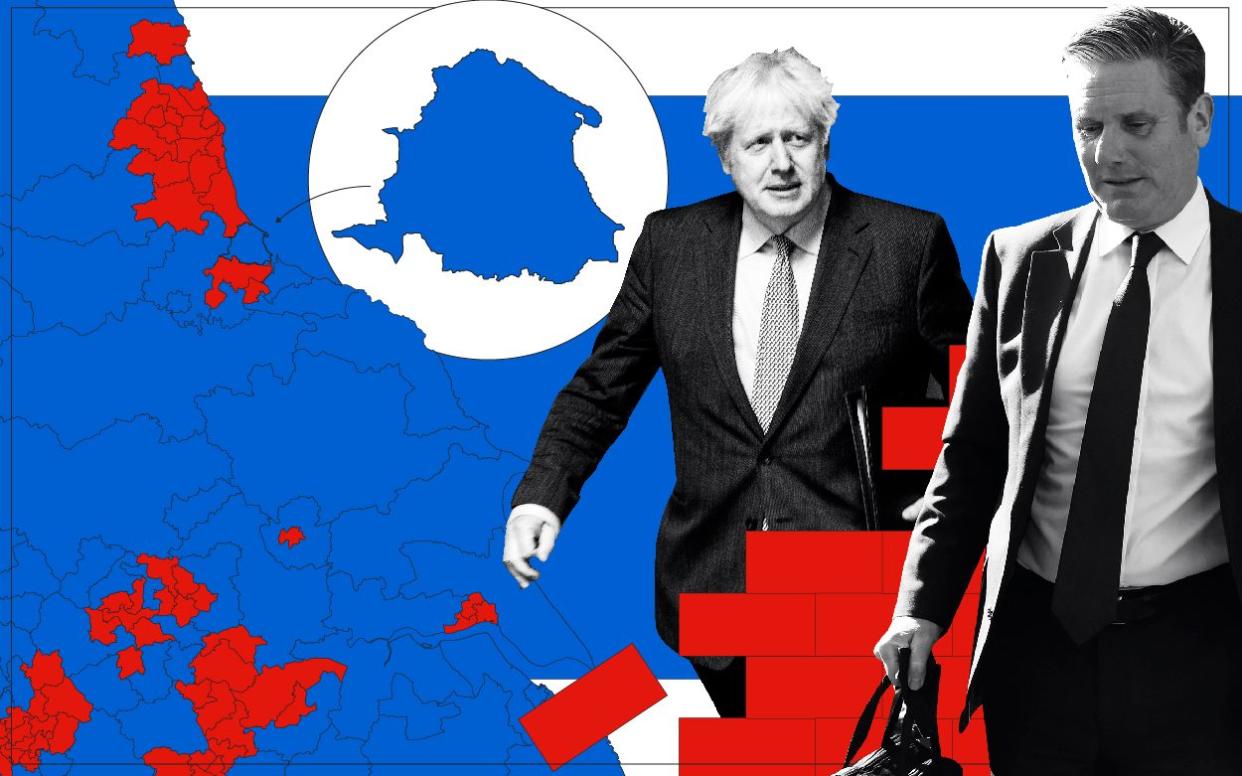In charts: Labour's worst result since Second World War shows 'Red Wall' has further to crumble

Labour's crushing Hartlepool defeat is its worst result in the area since the Second World War, historic data show, with the by-election lending further weight to suggestions that the party is being abandoned by its traditional base.
Paul Williams, the Labour candidate, received just 28.7 per cent of votes in Thursday's by-election, with 51.9 per cent going to Jill Mortimer, the Conservative. It was the lowest vote share in the constituency and its predecessors in 78 years.
Mr Williams' performance is only outdone by the Labour affiliated candidate in 1943, standing in what was then known as "The Hartlepools" constituency, who received 11.3 per cent of the vote at a time when the UK also faced a national crisis.
The by-election results – announced in the early hours of Friday – are further evidence of Labour's estrangement from its traditional heartlands, the "Red Wall" seats that would have been unthinkable candidates for turning blue just a decade ago.
Yet the 2019 general election saw traditional Labour seats in the North, such as Bolsover and Workingham, turn to the Conservatives – and Hartlepool has continued the pattern of "Red Wall" bricks falling.
The abandonment of the party by its traditional electoral base has been partly driving the Tory takeover of the North.
In the last election, Labour support in the 44 "Red Wall" seats it lost declined by around 11 per cent. Across the whole of the North-East outside of those key seats, the Labour vote dropped by 12 per cent – higher than the eight per cent swing against the party in England as a whole.
The Conservatives did not take up all of these votes, however – in fact, the vote share gained by them in those "Red Wall" constituencies was just five per cent.
Instead, the past three elections have seen UKIP and, in 2019, the Brexit Party comfortably help split the Labour vote.
Yet Hartlepool may be giving an indication of what happens in the absence of these parties, and one of the most remarkable features of the by-election is how much of an outlier it is to other contests held between general elections.
By and large, the party of government at the time of a by-election fares worse than rivals, with 34 of 67 of the races held involving a governing party since 1979 resulting in a loss.
In 30, the party held on to the seat – but an incumbent party has managed to steal a seat from another party in just three cases in the past 40 years.
Hartlepool marks the most recent upset and before that, in 2017, the Conservatives managed to take Brexit-leaning Copeland from Labour.
But you would have to go all the way back to 1982 to find another example of it happening – when the Tories beat the Labour-SDP defector Bruce Douglas-Mann in Mitcham and Morden, south London.
The way in which Hartlepool mirrors the areas in which the Tories last saw major wins – a large share of blue collar voters – may also have driven Friday's success.
Around 34 per cent of those living in the constituency are employed in routine or semi-routine work, according to the latest Office for National Statistics data – one of the highest shares in the country.
Its even higher swing from Thursday's election, from five per cent in 2019 to 16 per cent, puts it above the trend line seen at the last general election, when the areas swinging most fiercely to the Tories were also those with high shares of blue collar voters.
What is clear from the UK's electoral map, however, is the depths to which Labour's control of its old heartlands has plunged.
During the Tony Blair years, the party controlled four in five seats in the North and the Midlands following its 1997 landslide, past election data shows, yet this now stands at closer to two in five.
Even amidst declining approval ratings after the Iraq war, it was able to cling to three-quarters of constituencies in these areas.
After 13 years in power, Labour's momentum in the area faded. It secured just over half these seats before partly increasing its share in the next two elections.
But the disaster which unfolded in the 2019 saw its influence in the area collapse – for the first time since 1992, the Conservatives controlled more seats in the North and Midlands than Labour.
And as a proportion of all constituencies, Labour's share is at its lowest since the Second World War.

